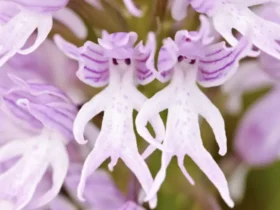In the arid and sun-drenched landscapes of South Africa, a fascinating and resilient succulent blooms with radiant colors—the Drosanthemum bicolor. Commonly known as the Living Stone plant, this succulent species belongs to the Aizoaceae family and has become a beloved favorite among succulent enthusiasts and gardeners worldwide. With its unique appearance and ability to thrive in challenging environments, Drosanthemum bicolor stands as a symbol of resilience and beauty in the world of succulents. In this article, we explore the captivating world of Drosanthemum bicolor, uncovering its appearance, characteristics, and care requirements for succulent enthusiasts to enjoy its vibrant presence in their gardens.’
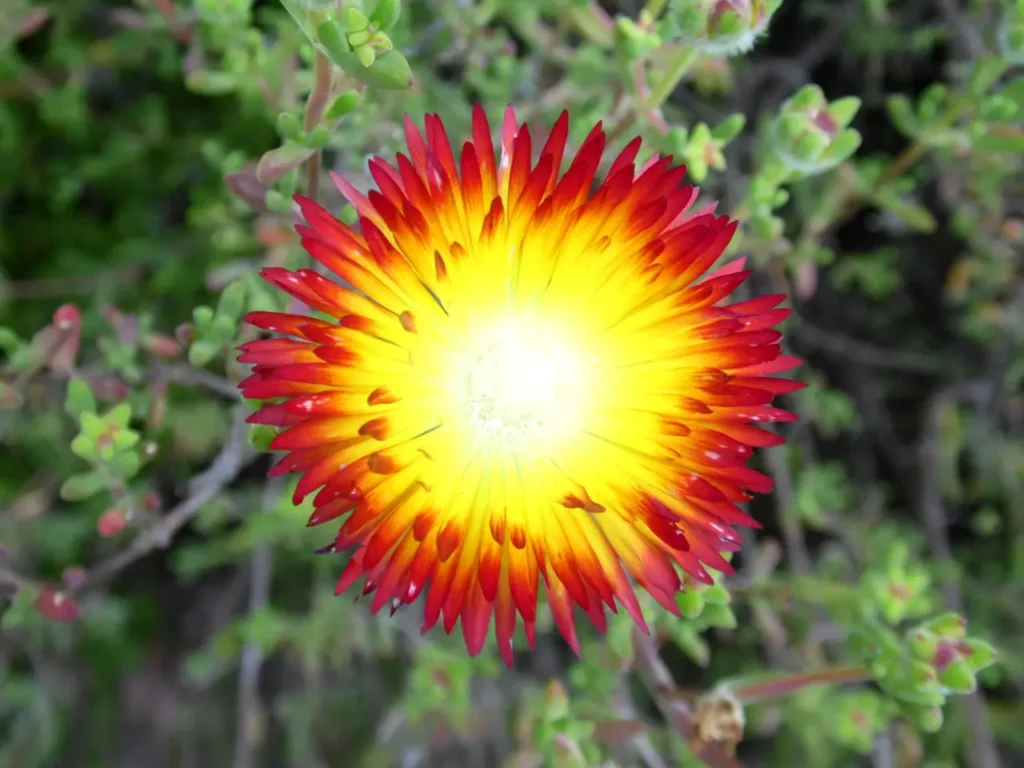
Appearance and Characteristics
Drosanthemum bicolor is a low-growing succulent plant with distinctive features that set it apart from other succulent species. Its foliage consists of fleshy, triangular leaves that are bright green and often have translucent tips. The leaves are arranged in a compact rosette form, creating a dense mat of succulent foliage that hugs the ground.
The name “Living Stone” is derived from the plant’s ability to resemble small pebbles or stones, which serves as a remarkable adaptation to its arid and rocky native habitat. When viewed from a distance, the Living Stone plant may seem like an assortment of colorful stones scattered across the ground, camouflaging it from potential herbivores and providing it with a unique and protective appearance.

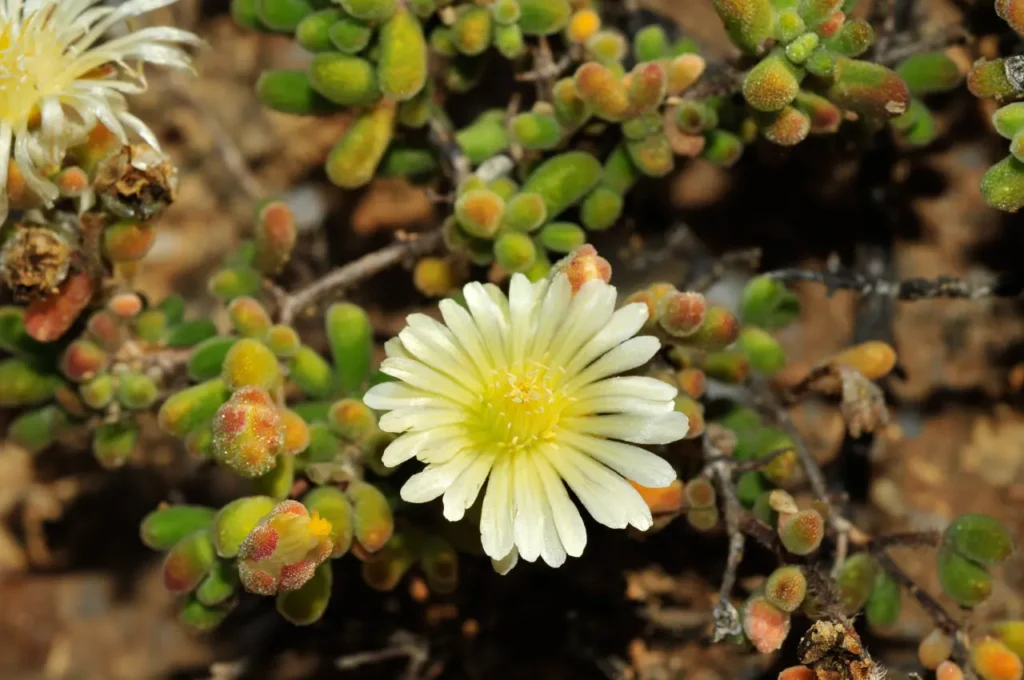

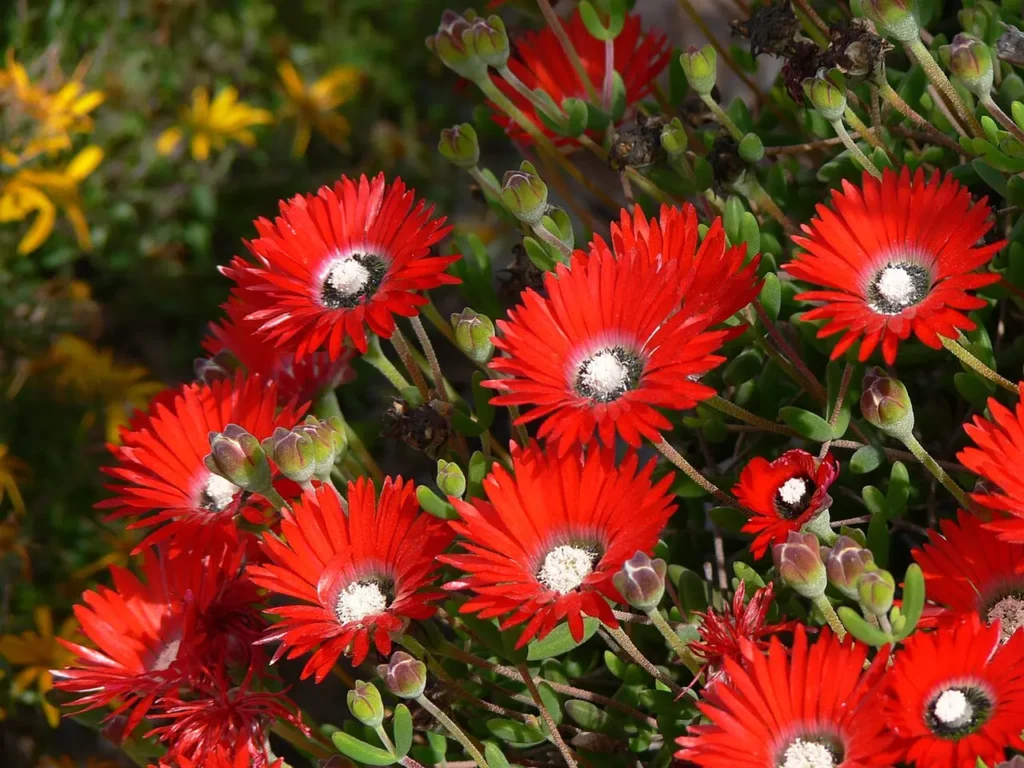
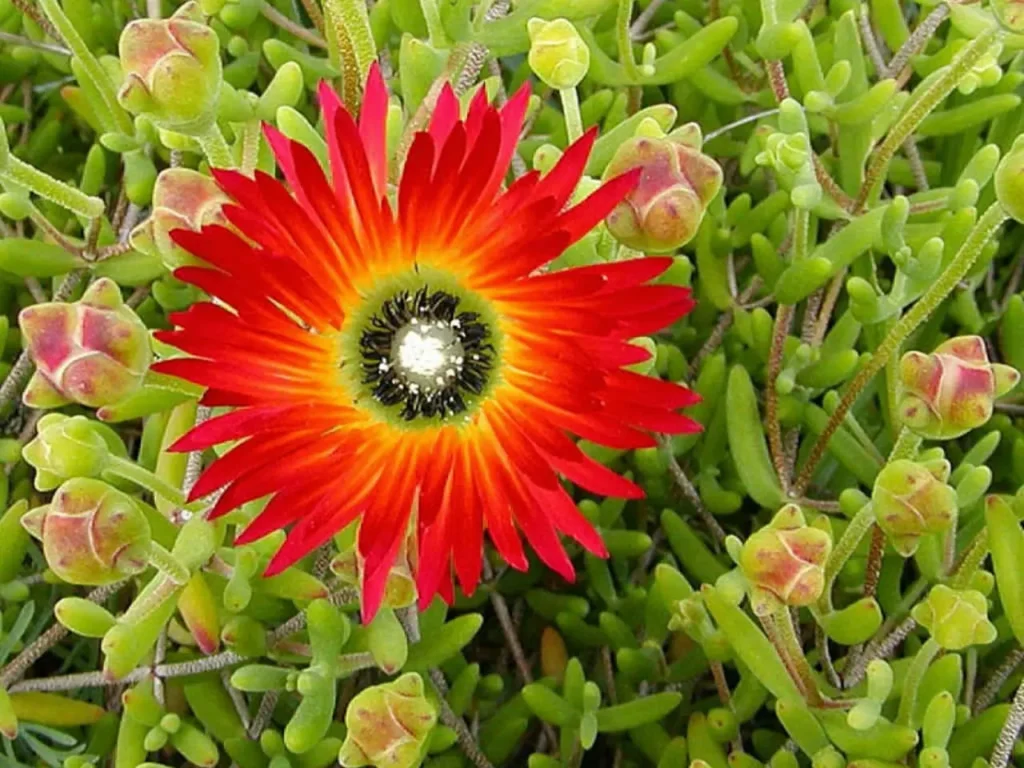
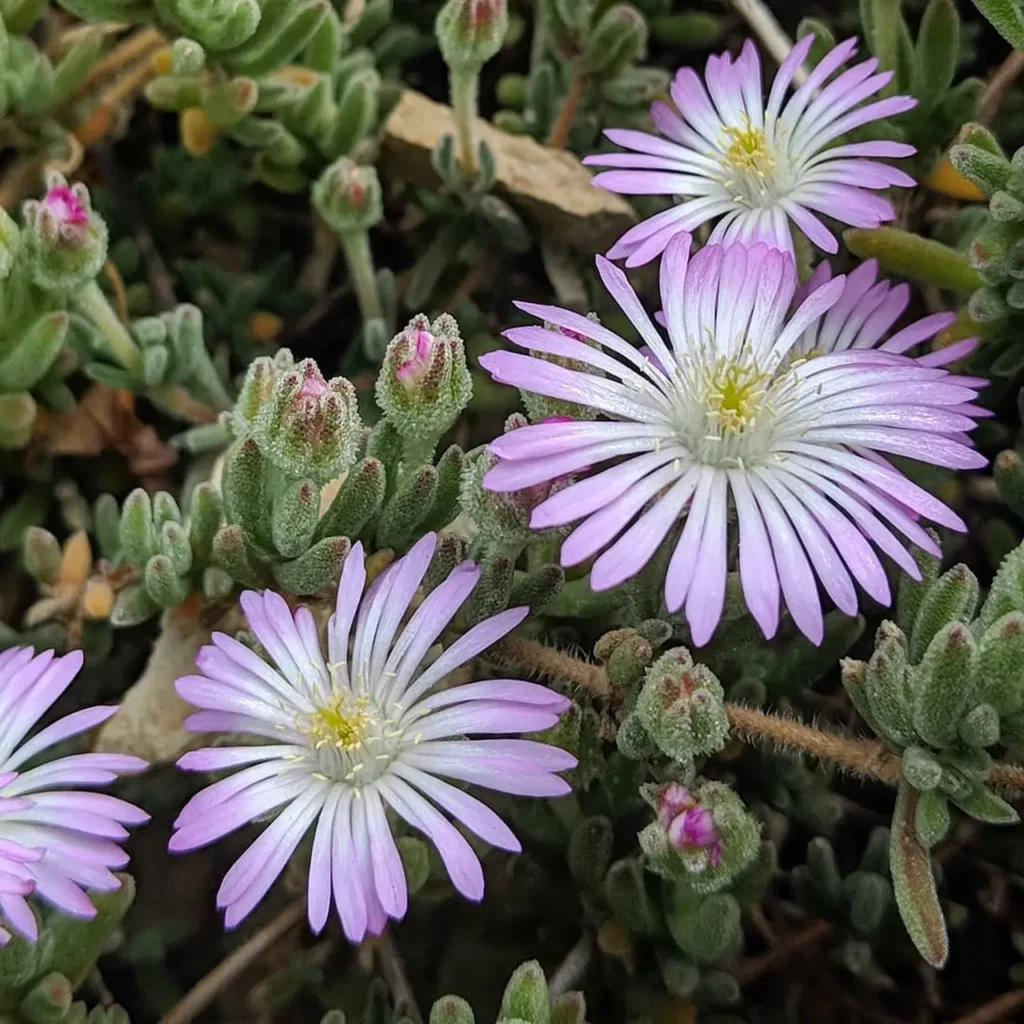
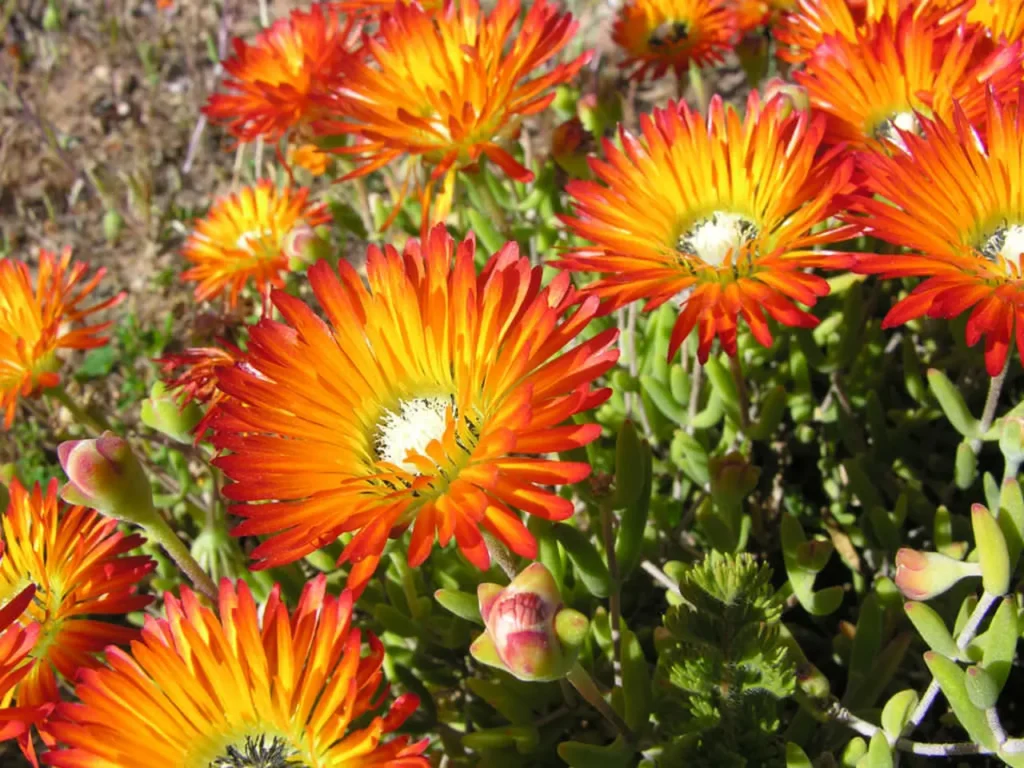
Types of Drosanthemum
Drosanthemum is a genus of succulent plants in the family Aizoaceae. These plants are native to South Africa and are known for their colorful and daisy-like flowers. They are often cultivated as ornamental plants due to their striking appearance and drought tolerance. Here are some common types of Drosanthemum:
- Drosanthemum floribundum: Also known as Rosea Ice Plant or Pink Carpet, this species has bright pink flowers and green, finger-like leaves. It forms a low-growing, dense mat and is often used as ground cover.
- Drosanthemum speciosum: This species is commonly referred to as Trailing Ice Plant. It has fleshy, trailing stems and vibrant magenta-pink flowers with a yellow center.
- Drosanthemum hispidum: Also known as Hairy Dew Plant, this species has cylindrical, finger-like leaves covered in tiny white hairs. It produces purple-pink flowers.
- Drosanthemum micans: This species is known for its silvery-blue leaves and bright pink flowers. The leaves have a shimmering appearance, giving rise to the name “Micans,” which means shining or sparkling.
- Drosanthemum bicolor: As the name suggests, this species has bicolor flowers with pinkish-purple petals and a white center. The leaves are green and cylindrical.
- Drosanthemum striatum: Also called Striped Dew Plant, this species has green, cylindrical leaves with red stripes. The flowers are pink with a yellow center.
- Drosanthemum candens: Known as the Grey Dew Plant, this species has grayish-green leaves and pink flowers. The leaves have a dense covering of tiny hairs, giving them a velvety appearance.
- Drosanthemum floribundum ‘Mezoo Trailing Red’: This cultivar of D. floribundum has vibrant red flowers and is commonly grown as a trailing plant in containers or hanging baskets.
- Drosanthemum floribundum ‘Mezoo Trailing Crimson’: Similar to the ‘Mezoo Trailing Red,’ this cultivar has deep crimson-red flowers and is prized for its spreading habit.
- Drosanthemum floribundum ‘Starburst’: This cultivar features star-shaped, hot-pink flowers with a white center, creating a striking visual effect.
These are just a few examples of the diverse Drosanthemum species and cultivars. Drosanthemum plants are prized for their easy-care nature, beautiful flowers, and ability to thrive in arid and sunny conditions, making them popular choices for xeriscaping and water-wise gardening.
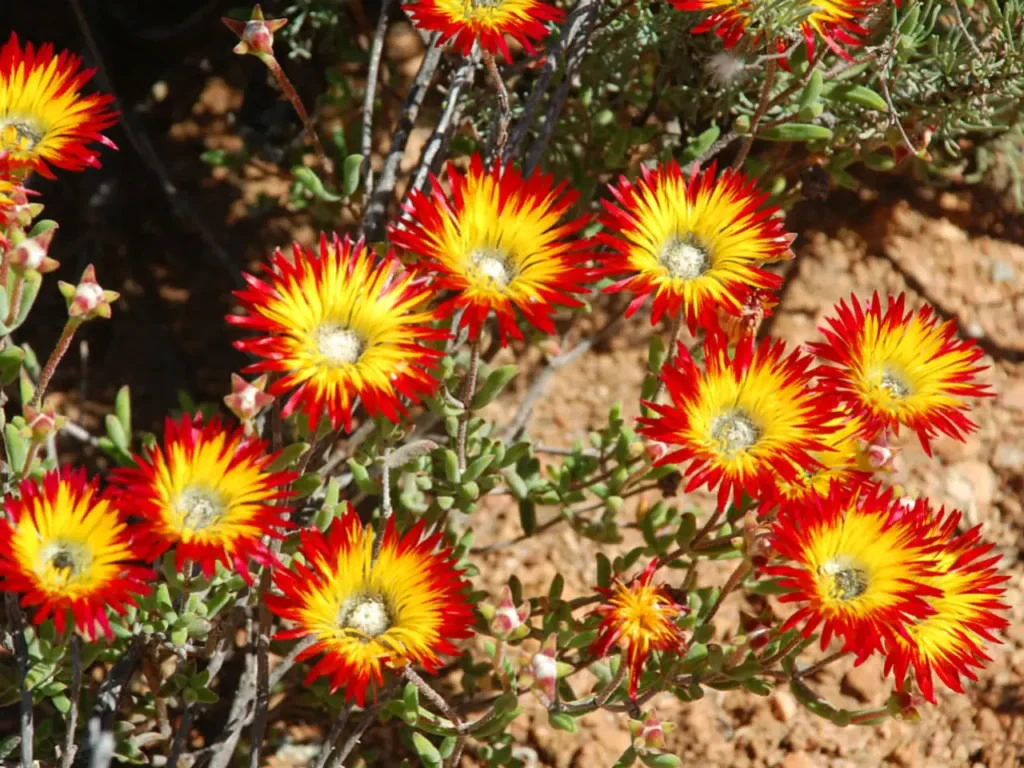
Flowers and Blooms
During the blooming season, which typically occurs in late spring to early summer, Drosanthemum bicolor produces stunning flowers that add an explosion of color to its otherwise monochromatic appearance. The flowers are daisy-like, displaying a striking contrast of vibrant colors. The outer petals are usually a rich magenta or pink hue, while the inner petals are a bright white or pale yellow. This bicolor effect gives the succulent its specific epithet, “bicolor.”
The flowers open during the day, basking in the sunlight, and often close at night or during overcast weather conditions. They attract pollinators, such as bees and butterflies, which aid in cross-pollination and the formation of seeds for the plant’s propagation.

Habitat and Growing Conditions
Drosanthemum bicolor is native to the arid regions of South Africa, where it thrives in well-draining soils and under full sunlight. It is often found growing among rocks and gravel in dry, rocky slopes, and sandy areas. This succulent’s ability to withstand harsh conditions and store water in its fleshy leaves makes it perfectly adapted to the arid environments it calls home.
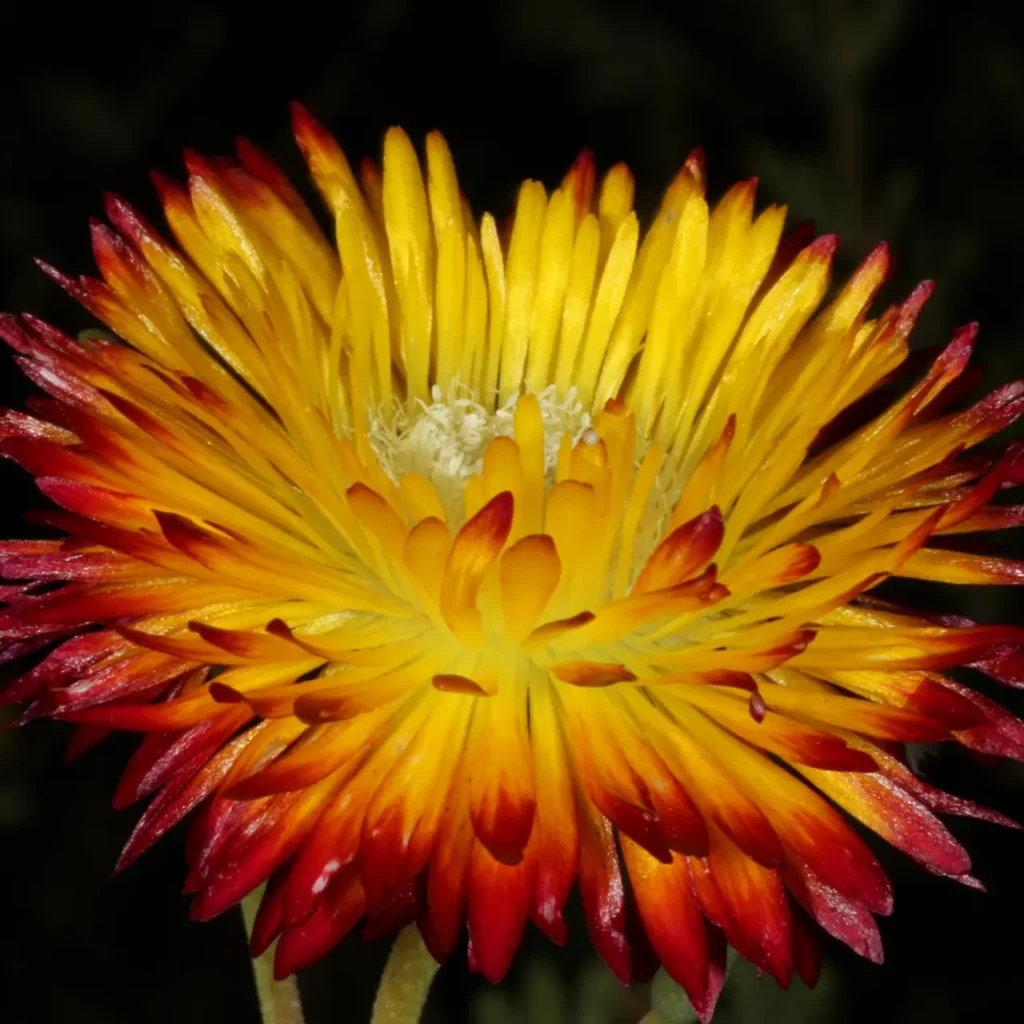
Cultivation and Care
For succulent enthusiasts and gardeners, cultivating Drosanthemum bicolor can be a rewarding and enjoyable experience. Here are some essential tips for successfully growing and caring for this radiant succulent:
- Sunlight: Provide your Living Stone plant with ample sunlight, as it thrives under full sun conditions. Place it in a sunny spot, such as a south-facing window or a garden bed with direct sunlight.
- Soil: Use a well-draining soil mix specifically formulated for succulents. A mix of cactus soil, perlite, and sand is ideal for Drosanthemum bicolor’s root development and water retention needs.
- Watering: Allow the soil to dry out between waterings to prevent overwatering, which can lead to root rot. Water sparingly, especially during the plant’s dormancy period in winter.
- Temperature: Drosanthemum bicolor prefers warm temperatures and can tolerate mild frosts but is not frost-tolerant. Protect it from freezing temperatures, especially during winter.
- Propagation: Propagate your Living Stone plant through stem cuttings or by division. Stem cuttings should be allowed to callus for a day or two before planting in well-draining soil.
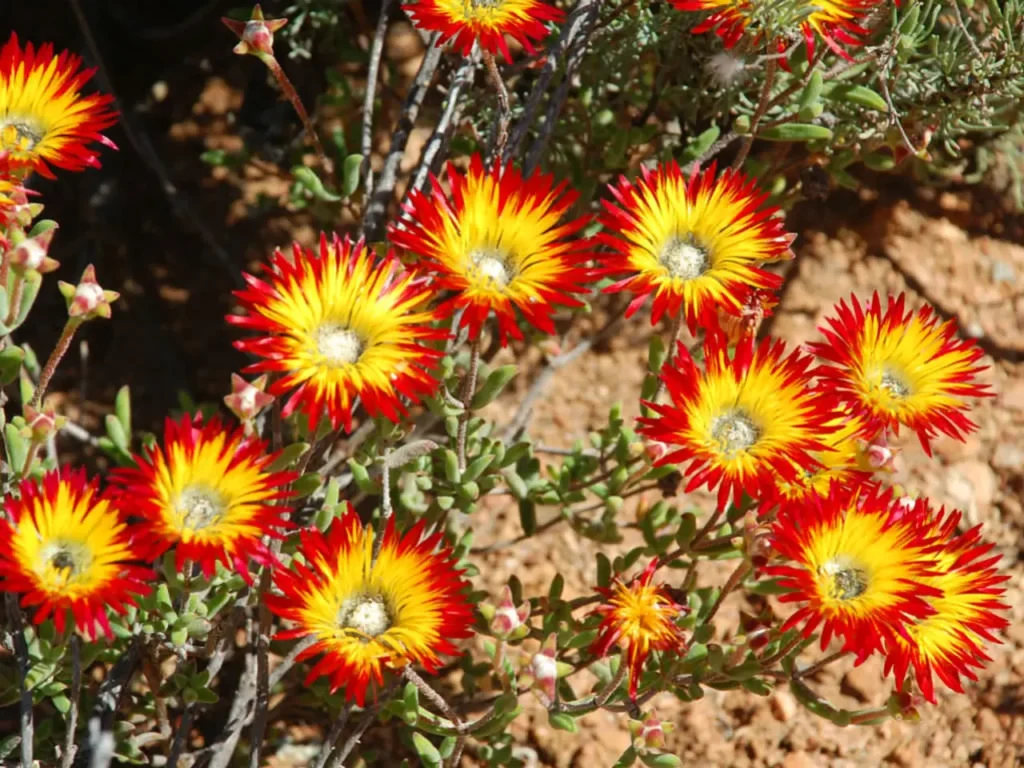
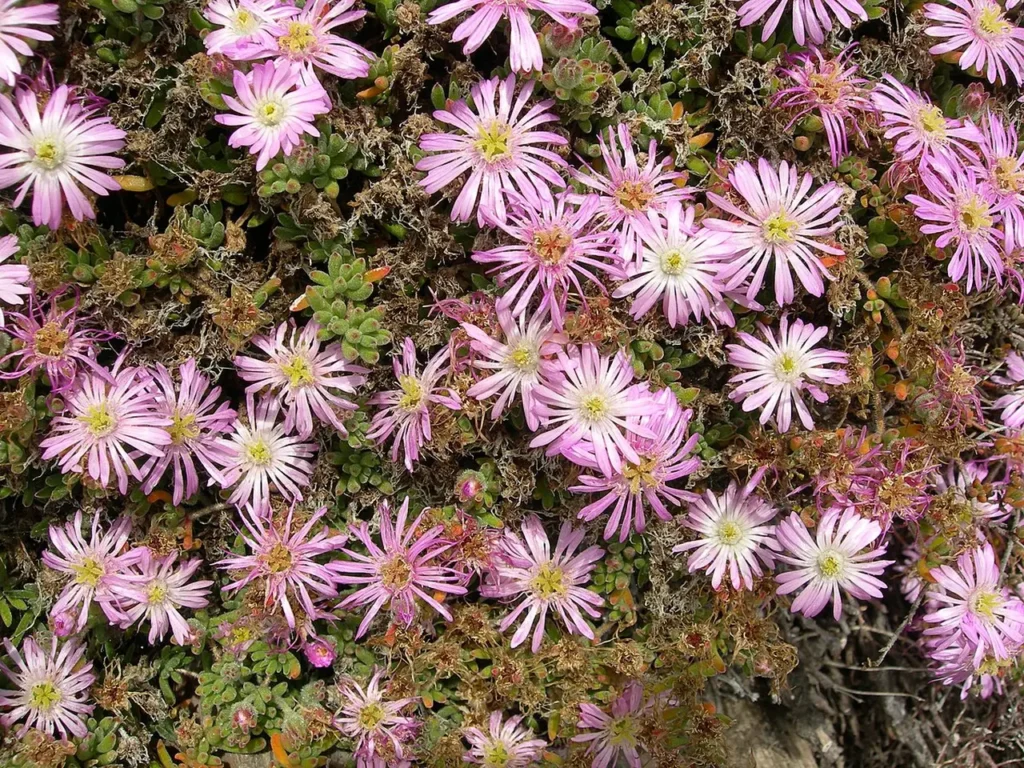
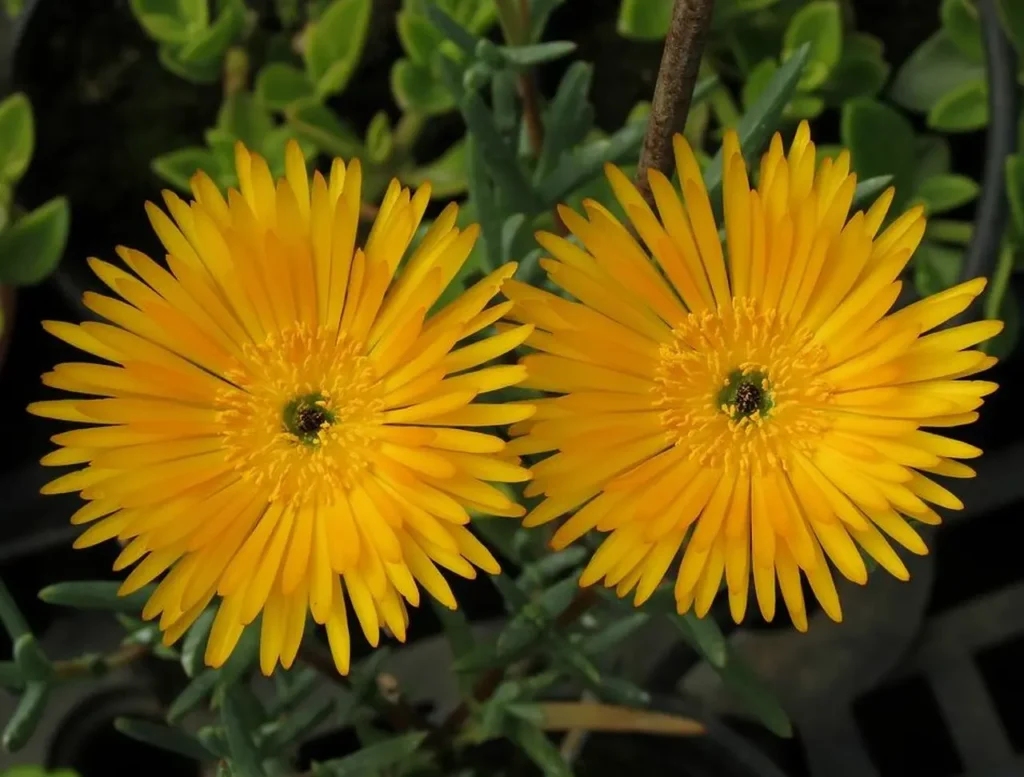
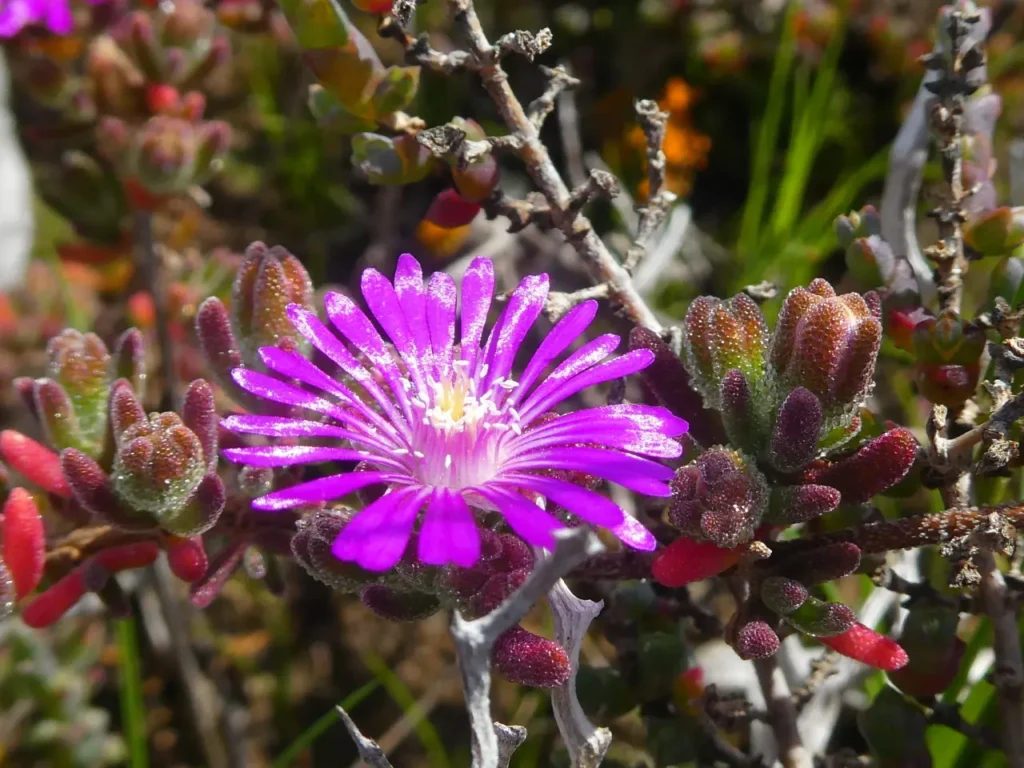
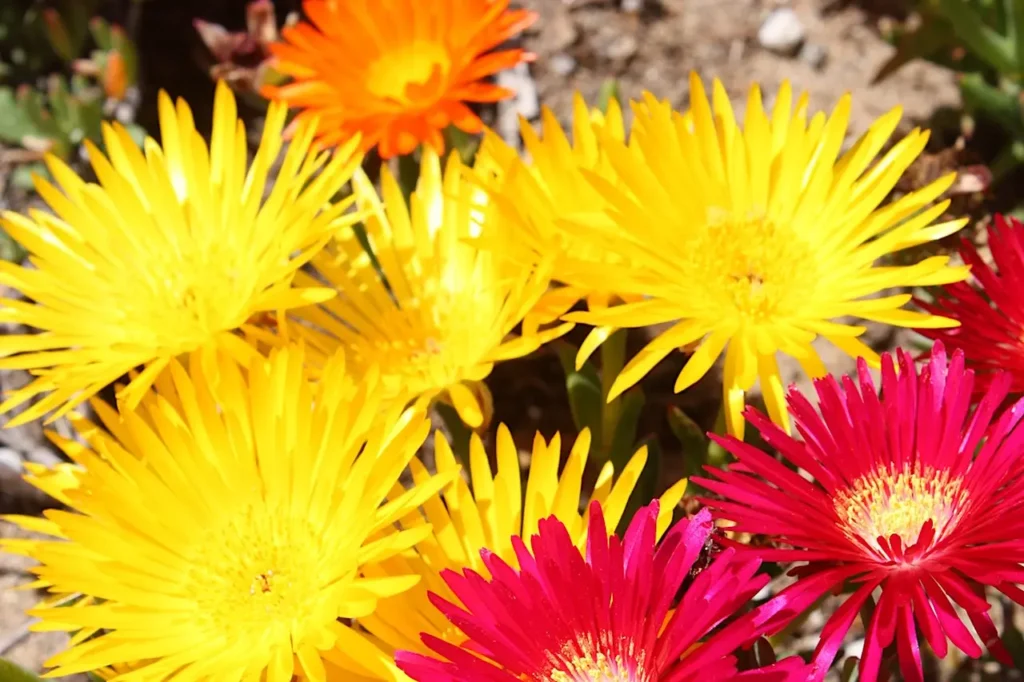

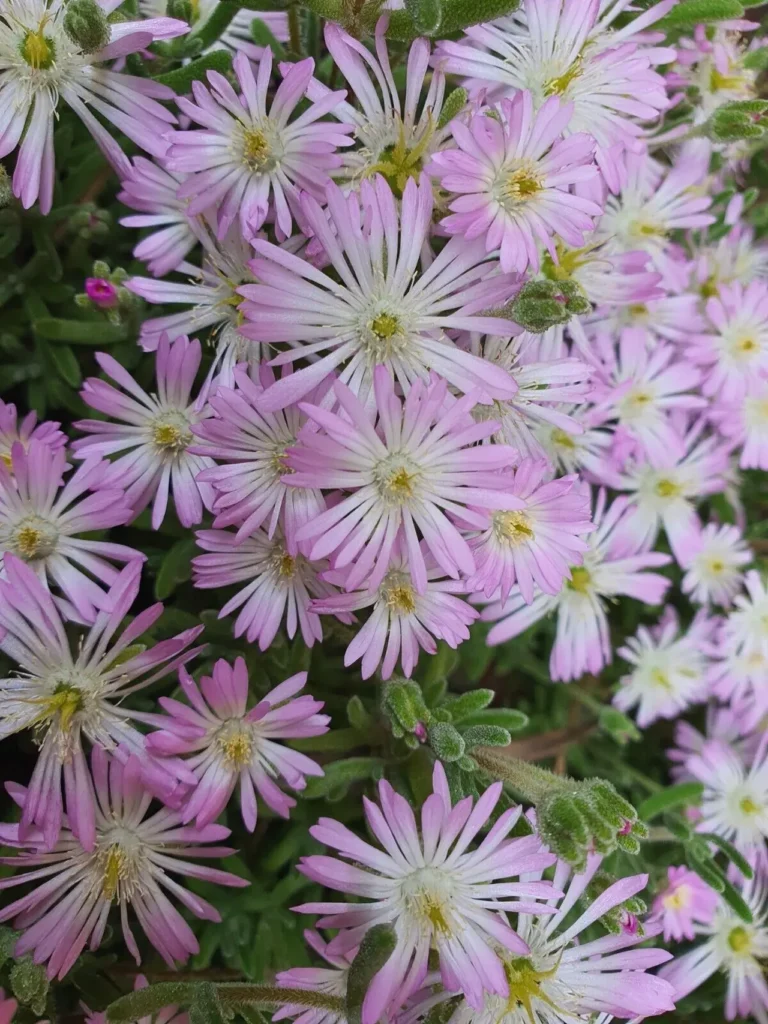
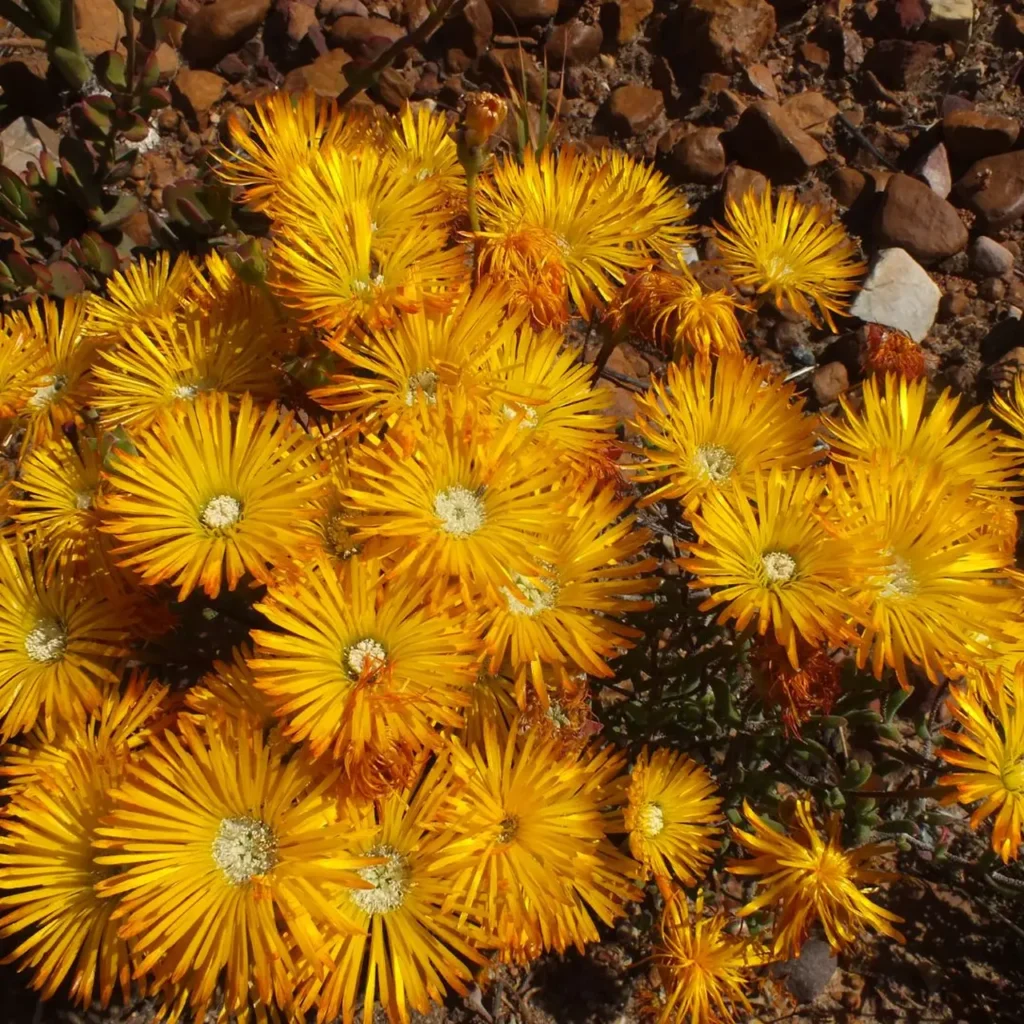
Drosanthemum bicolor, the Living Stone plant, stands as a shining example of resilience and beauty in the world of succulents. With its compact rosette form and stunning bicolor flowers, this South African succulent is a delightful addition to succulent collections and gardens. As we explore and appreciate the captivating allure of Drosanthemum bicolor, we are reminded of the wonders of adaptation and survival in the plant kingdom. By providing the right growing conditions and care, succulent enthusiasts can enjoy the vibrant presence of the Living Stone plant and witness its remarkable display of beauty and resilience throughout its lifecycle.
